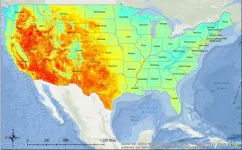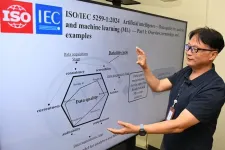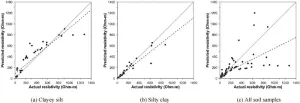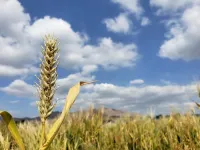(Press-News.org)
Analysis of air samples taken at altitudes of up to 3,000 metres above Japan has revealed the presence of a vast range of viable bacteria and fungi transported by air masses originating more than 2,000 kilometres away, in regions enriched with fertilisers and pesticides. The study, published in Proceedings of the National Academy of Sciences (PNAS), reveals a new way in which human, animal and plant pathogens may travel to distant geographical regions. This research has been led by the Barcelona Institute for Global Health (ISGlobal), a centre supported by “la Caixa” Foundation, in collaboration with the Daniel Bravo Andreu Private Foundation (FPDBA).
Pathogens can be airborne, but little is known about the diversity of microbes that can survive at very high altitudes, where the conditions are harsh. “We know that above a certain point in the troposphere (called the planetary boundary layer), certain materials can be transported over long distances because the air in that region is isolated from the surface and there is less friction. But we did not suspect that viable microorganisms could be there also,” says Xavier Rodó, ICREA researcher at ISGlobal.
“Our study is unique in that we performed 10 tropospheric flights to examine microbial diversity at high altitudes, while most studies have been performed only a few metres above the ground or the ocean,” he adds.
Airborne microbes high above Japan
Using a Cessna aircraft, Rodó and an international team of colleagues conducted ten air surveys between 1,000 and 3,000 metres above Japan, starting from Chofu airport near Tokyo. All flights were planned to follow wind currents coming from mainland Asia in what are known as tropospheric bridges, which connect air from distant regions of the world; in this case, air that uplifts in mainland China and then descends over Tokyo due to typical winter weather conditions. For comparison, samples were also collected on the ground at Chofu. A total of 22 aerosol filter samples, collected during two periods (February and April, 2014), were analysed for their chemical and biological composition.
DNA sequencing allowed the research team to identify over 266 fungal and 305 bacterial genera associated with the aerosols, some of which are potentially pathogenic for humans, other animals or plants. For instance, bacterial species such as Escherichia coli, Serratia marcescens, Clostridium difficile, Clostridium botulinum, Haemophillus parainfluenzae, Acinetobacter baumannii and several Staphylococcus species were identified, as well as fungal species from genera such as Candida, Cladosporium and Malassezia, capable of causing disease in susceptible and immunocompromised individuals.
By culturing some of the samples, the researchers showed that bacteria collected from the air remained viable, and that some were resistant to commonly used antibiotics. “Surprisingly, the Micrococcus luteus strain isolated was resistant to multiple drugs, including carbapenems, glycopeptides, ciprofloxacin, and trimethoprim-sulfamethoxazole. Our findings suggest that antimicrobial resistance could spread over long distances via this previously unrecognised route", says Sofya Podzniakova, co-first author of the study.
Travelling thousands of kilometres
The association of these aerosols with certain elements such as zinc sulfate and potassium, commonly used in fertilizers and pesticides, suggests an agricultural origin, consistent with intensively farmed croplands in northeast China.
Finally, during the days sampled, flight and ground samples were very similar in terms of microbial diversity, which can be explained by air descending from high altitudes to the ground. The particle transport models, simulated by Roger Curcoll -currently a researcher at the Universitat Politècnica de Catalunya - BarcelonaTech (UPC)- have corroborated both the possible transport of these particles from northeast China and the decline of tropospheric air masses to land in Japan.
“Our findings uncover a rich and unprecedented diversity of microbes that are dispersed by wind currents thousands of kilometres away from their sources by intense tunnels of wind that form high in the troposphere,” says Rodó. “They represent a paradigm shift in our understanding of how human health can be affected by pathogens thriving in the environment, particularly in the air”.
While the study does not prove a causal link between the presence of known human pathogens in aerosols and health effects, it does emphasise the need to further explore the spread of different microbial pathogens over long distances.
Reference
Rodó X, Pozdniakova S, Borràs S, Matsuki A, Tanimoto H, Armengol MP, Pey I, VilaJ, Muñoz L, Santamaria S, Cañas L, Morgui JA, Fontal A, Curcoll R. Microbial richness and air chemistry in aerosols above the PBL confirm 2000-km long-distance transport of potential human pathogens. PNAS. 2024. doi:10.1073/pnas.2404191121
END
The Wyss Institute at Harvard University announced today that Ropirio Therapeutics, Inc. (Ropirio) has secured a worldwide, exclusive license from Harvard’s Office of Technology Development (OTD) and Boston University (BU)’s Technology Development office for novel molecules that activate the lymphatic system - a first in the pharma industry.
“There has been a tremendous amount of research into the lymphatic system over the last decade, with scientists uncovering new lymphatic vasculature and understanding the critical role it plays across a wide range of serious diseases. Ropirio is building on this explosion of research ...
Between 2018 and 2020, Australia implemented policy changes to improve the quality and safety of opioid prescribing, with a specific focus on oxycodone. A new study led by The University of Queensland (UQ) using wastewater analysis has determined that oxycodone consumption in Australia dropped by 45% from 2019 to 2020, coinciding with those national policy changes.
In November 2019, the Australian National Prescribing Service launched a federal initiative to improve opioid prescribing. The initiative involved alerting high-prescribing clinicians that their opioid prescribing practices were outside typical ...
A neighborhood’s walkability is affected by many factors such as street connectivity and density; access to destinations and aesthetics; investment in walking and biking infrastructure; and the presence or absence of urban natural features, specifically tree cover.
Not all neighborhoods are alike. Many neighborhoods in impoverished and minority communities lack the cooling effect of vegetation and tree cover, especially in urbanized areas. As a result, residents face the “heat island effect,” where temperatures remain higher in urban areas ...
Recently, many major countries around the world, starting with the U.S., Japan, Germany, China, U.K., etc., have issued an administrative order to ensure the safety of AI technology, putting an emphasis on the safe, effective implementation of AI into their systems. In line with such trends, Korean researchers have collaborated with renowned AI experts from all around the world to create new AI-related international standards, garnering attention from the global AI community.
Proposal No.
Title
Status
ISO/IEC ...
WHAT:
Newborns who had an atypical pattern of metabolites were more than 14 times as likely to die of sudden infant death syndrome (SIDS), compared to infants who had more typical metabolic patterns, according to a study funded in part by the National Institutes of Health. Metabolites are molecules produced by the body’s various chemical reactions. Researchers found that infants who died of SIDS had a specific pattern of metabolites compared to infants who lived to their first year. The researchers believe that checking for this pattern could provide ...
Biotechnological pesticides are a promising alternative to traditional chemical pesticides. But we have limited knowledge of how toxic they are to other organisms in the environment beyond regulatory assessments. A new research centre will now work to provide this knowledge – especially to ensure the EU has a chance of joining the growing market for biotechnological pesticides. As for now, Europe has failed to keep up.
"If a thing kills something, we need to know how it kills, and who and what else it may kill," says Professor Nina Cedergreen of the University of Copenhagen’s Department of Plant and Environmental Sciences.
She is ...
Proper power grounding systems are necessary for maintaining the safety and reliability of critical electrical subsystem infrastructure, such as substations. Power grounding systems provide a low-resistance path for electrical fault currents to flow into the earth, preventing electrical shocks, fires, and damage to vital equipment. Investigation of soil resistivity is crucial for designing power grounding systems. For the most cost-effective and efficient grounding systems for electrical substations, it is imperative to carefully ...
Researchers at Chalmers University of Technology, in Sweden, have for the first time succeeded in combining two major research fields in photonics by creating a nanoobject with unique optical qualities. Since the object is a thousand times thinner than the human hair, yet very powerful, the breakthrough has great potential in the development of efficient and compact nonlinear optical devices. “My feeling is that this discovery has a great potential,” says Professor Timur Shegai, who led the study at Chalmers.
Photonic applications harness the power of light-matter interactions to generate ...
Thanks to an experiment started before the Great Depression, researchers have pinpointed the genes behind the remarkable adaptability of barley, a key ingredient in beer and whiskey. These insights could ensure the crop’s continued survival amidst rapid climate change.
Grown everywhere from Asia and Egypt to Norway and the Andes mountains of South America, barley is one of the world’s most important cereal crops and has been for at least 12,000 years. As it has spread across the globe, random ...
PULLMAN, Wash. -- A computer algorithm can efficiently find genetic mutations that work together to drive cancer as well as other important genetic clues that researchers might someday use to develop new treatments for a variety of cancers.
Reporting in the journal Frontiers in Bioinformatics, a Washington State University-led team used a novel network computer model to find co-occurring mutations as well as other similarities among DNA sequence elements across several types of cancer. The model allows for easier searches for patterns in huge seas of cancer genetic data.
“This is a ...




